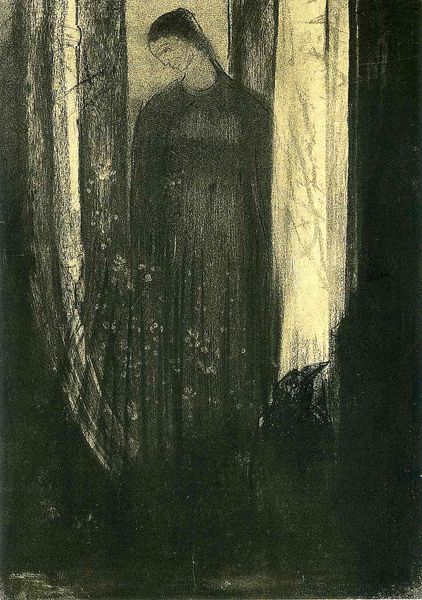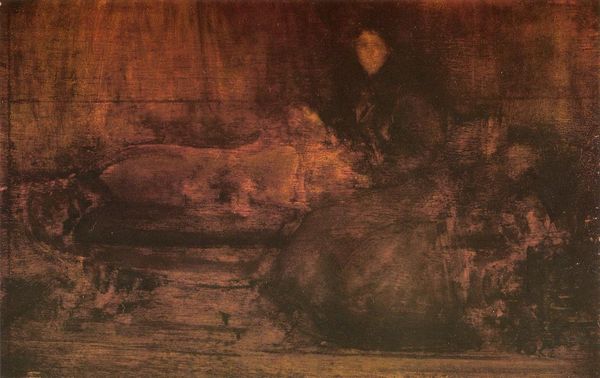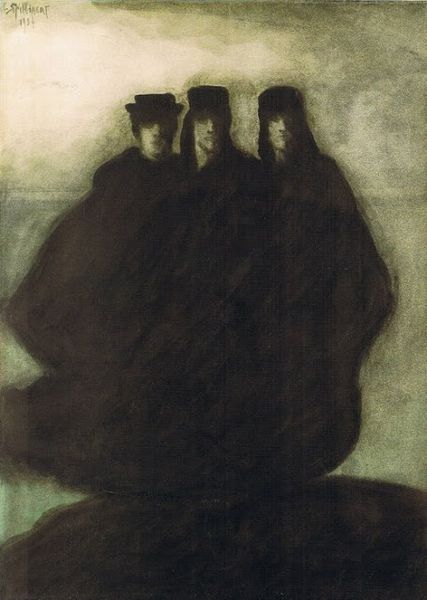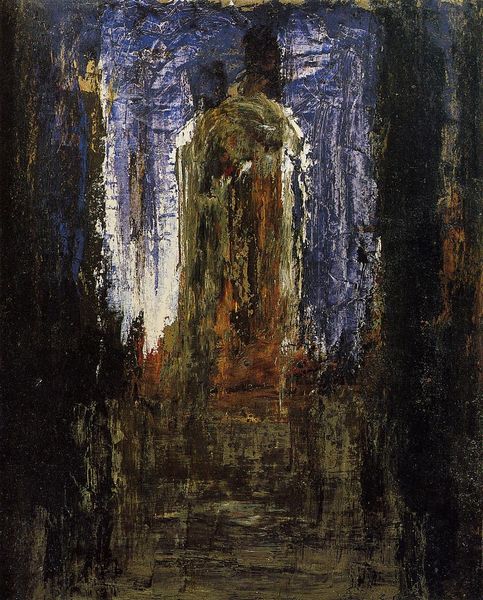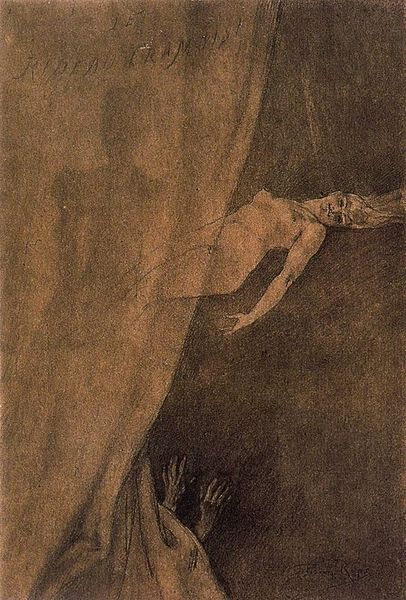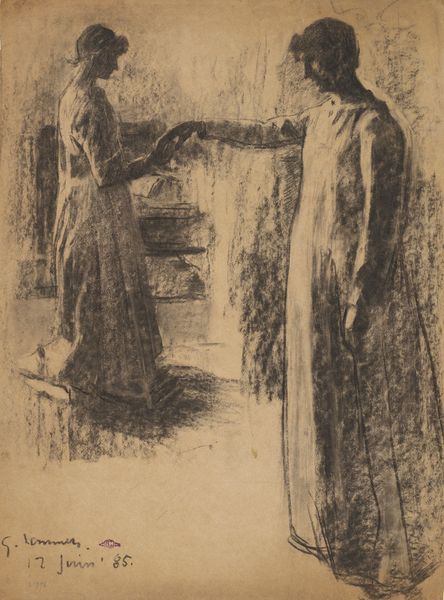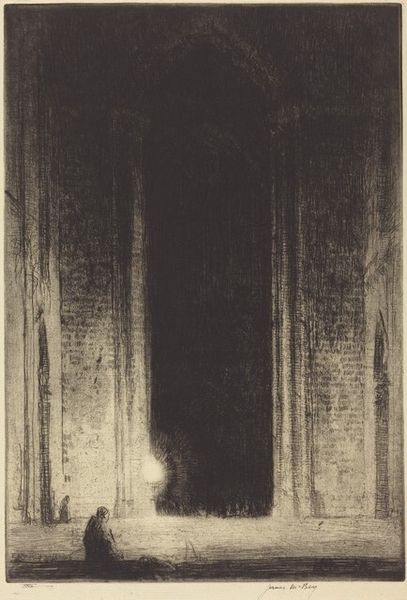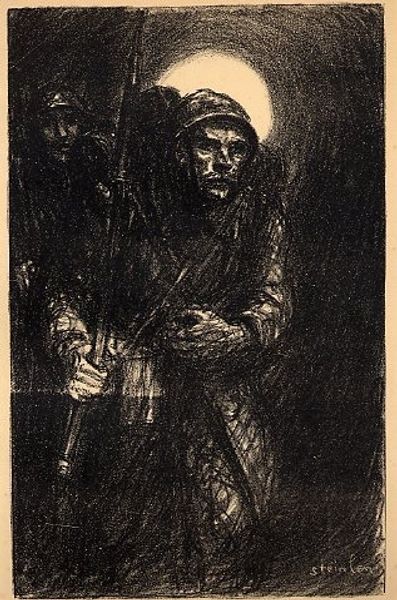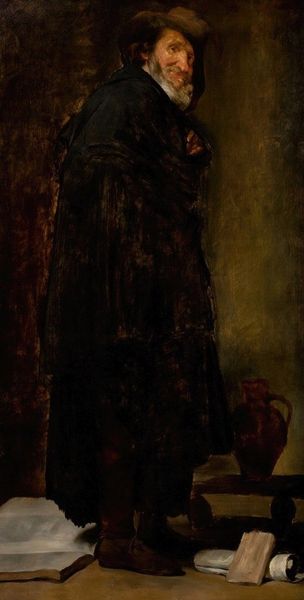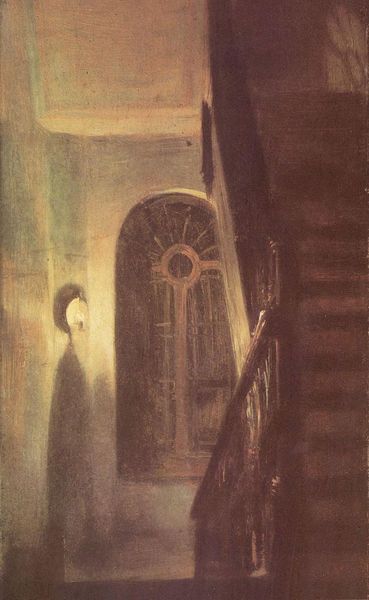
drawing, charcoal
#
drawing
#
symbol
#
charcoal drawing
#
figuration
#
line
#
symbolism
#
charcoal
#
charcoal
Copyright: Public domain
Curator: Odilon Redon's “The Black Torches,” created in 1889, employs charcoal to evoke a rather unsettling atmosphere. Editor: Unsettling is one word for it. To me, it’s straight out of a nightmare. The hazy, almost ghostly figures are draped and the smudging— it really makes the air feel thick, doesn't it? Curator: Absolutely. Redon was deeply embedded in Symbolism. And, looking closely, the technique here suggests more than just depiction; it seems intentionally constructed to provoke certain emotions and anxieties. Considering the charcoal, a relatively accessible medium, how does the apparent simplicity of its production factor into its aura? Editor: Good point, a raw material. There's a very delicate interplay between what's present, the draped figures emerging from dark shadows, and what's absent— the suggestion of more beyond our view, a void, the stuff nightmares are truly made of. It’s kind of scary in its ambiguity. Curator: Redon, as a Symbolist, actively pushed back against the rigid confines of academic painting. "The Black Torches" embraces the evocative power of line and shadow to unlock inner worlds. Editor: Right! Almost like automatic drawing, straight from the unconscious, just a stick of charcoal against textured paper. Does this kind of art-making liberate something dark inside us, do you think, Curator? Curator: Well, the immediacy of charcoal emphasizes the artist's gesture, his labor. Its widespread availability democratizes the means of production and perhaps in that, democratizes a sort of unconscious expression. It’s about labor, about material. Editor: Huh! Democratizing the darkness. So interesting. Thanks for turning on the light! Curator: My pleasure. Charcoal allows him— us all, potentially— to give material form to ethereal, conceptual realities.
Comments
No comments
Be the first to comment and join the conversation on the ultimate creative platform.

